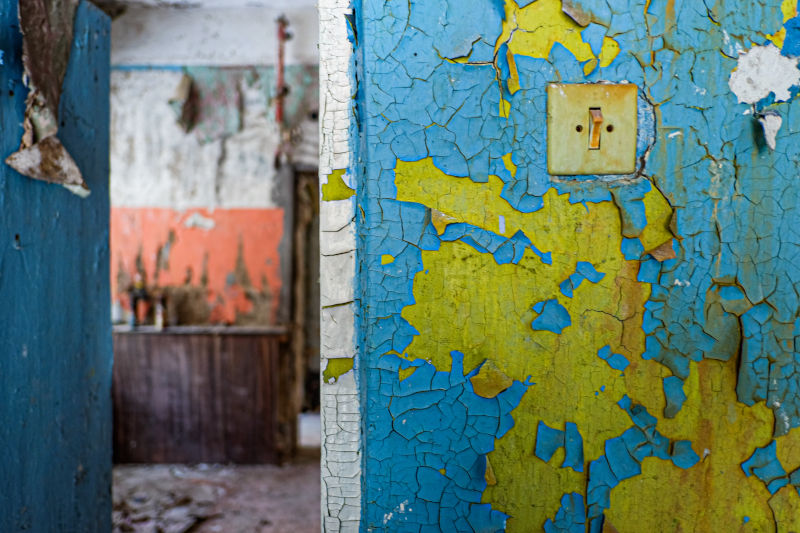Trust in the powers that be
August 27, 2022
Remember the Cold War I years, when Capital Hill in Canberra became a huge hole, at the bottom of which was a space designated as a bomb shelter?
The 1800 square metre area would keep key ministers, the cabinet, or the entire ministry safe from nuclear fallout for up to 14 days. What they would then do wasnt clear. What everyone else would do wasnt clear either.
To contain construction costs, Prime Minister Malcolm Fraser dropped the bunker plan in 1981, and instead set aside a smaller basement space which could be used, together with the underground car park, in the event of a nuclear attack. The government said it thought that was unlikely and found no clear statement of function for the shelter. They probably knew that neither it nor the car park would save anyone.
A year after Capital Hill was hollowed out, Raymond Briggs, a prolific British author of childrens books, produced When the Wind Blows, a cartoon story about an ageing rural couple, James and Hilda Bloggs, who like the Fraser government dont expect nuclear war. But It looks as if theres going to be a war, dear, says James, who has brought the Householders Guide to Survival from the public library. On radio, the Prime Minister warns of an outbreak of hostilities in three days time. Panicking, James and Hilda are confused about the enemy: is it the Nazis or the Russkies? But the governmental authorities, theyre sure, will know what to do.
With no capacity or time to dig a hole, they follow Council instructions to make an inner core or refuge by leaning a door against a wall and putting cushions underneath. Air raid shelters, they know, are old-fashioned, and their son in London isnt building one: if London cops it, hell cop it, he says. It will all be over in a flash, says James prophetically, just before there is one.
Such nuclear disasters as happened were far from Canberra. The Maralinga site of seven British tests of nuclear weapons between 1956 and 1963, inadequately remediated, caused injuries and deaths and left the area permanently uninhabitable. Most Australians looked on from a safe distance. They took the same long view of nuclear tests at Monte Bello island and Bikini Atoll in the Pacific. Nuclear power stations were banned in every Australian state and territory, so that was that. The nuclear waste issue was put off.
Britains worst nuclear accident occurred at Windscale in Cumbria in 1957 when a reactor that produced plutonium for nuclear weapons caught fire, releasing radioactive iodine into the atmosphere. Milk from the region was banned from sale. The plant was renamed Sellafield, and it now reprocesses nuclear waste.
In the same year, a storage tank at the Mayak plutonium plant in the Southern Urals exploded, releasing a cloud of high-level radioactive particles over 750 square kilometres. The event was kept secret by the USSR for 30 years. Mayaks five nuclear reactors from 1945 to 1948 had produced plutonium for atom bombs, and later reprocessed spent fuel and nuclear waste, for which there was not enough storage. Some 76 cubic metres of toxic chemicals including radioactive waste were dumped in the Techa river, contaminating the water supply of 40 villages, half of which were evacuated.
When a nuclear reactor melted down at Chernobyl in Ukraine in 1986, due to faulty technical procedures, a cloud of radioactive particles blew across the USSR and Europe, resulting in 100 deaths from radioactive contaminants according to Moscow, or up to 4000 according to WHO. Some 46,000 people were evacuated. The plant has been contained in a sarcophagus, but a complete cleanup is expected to take until 2065.
A partial meltdown at the Three Mile Island plant in Pennsylvania in 1979 was the worst US accident in a commercial nuclear power reactor. A malfunction in the cooling system caused a nuclear core to melt, and toxic coolant escaped, together with radioactive gases and iodine 131. Cancer incidence and death rates in the area were found by some researchers to be abnormal, while others disputed this.
The triple disaster at Fukushima in 2011 was the worlds second Level 7 nuclear event, equalling Chernobyl. An earthquake and tsunami combined to cut off emergency power generators, causing a loss of coolant water. Three out of six Tokyo Electric Power Company (TEPCO) reactors melted down. Water contaminated with radioactivity was released into the Pacific Ocean. Deaths immediately connected to the meltdown were few, however, and plans to evacuate the Imperial family and the Ministry were not put into action. The IAEA blamed Japans Ministry of Economy, Trade and Industry, acting both as a promoter of nuclear power and as regulator, for conflicts of interest and lack of oversight. TEPCO later admitted it had failed to take necessary precautions.
The details of these catastrophic events and other dangerous near-misses are well known to everyone in the nuclear power and weapons business. Whether for commercial or military reasons, errors, lies and secrecy still characterise their activities. Russian and Ukrainian forces have been fighting for control of the Chernobyl site. False flag operations have been evident in Zaporizhzhia, Europes biggest nuclear power station, ever since February. The Kyiv government accuses Russia of firing missiles at Zaporizhzhia, on a large reservoir in the Dnipro river, where Ukrainians still work. Russia says Ukrainian forces are shelling the site across the water from the southern side, particularly at night. They would blame a nuclear disaster on each other, and achieve nothing.
Raymond Briggs died on 9 August, aged 88.

